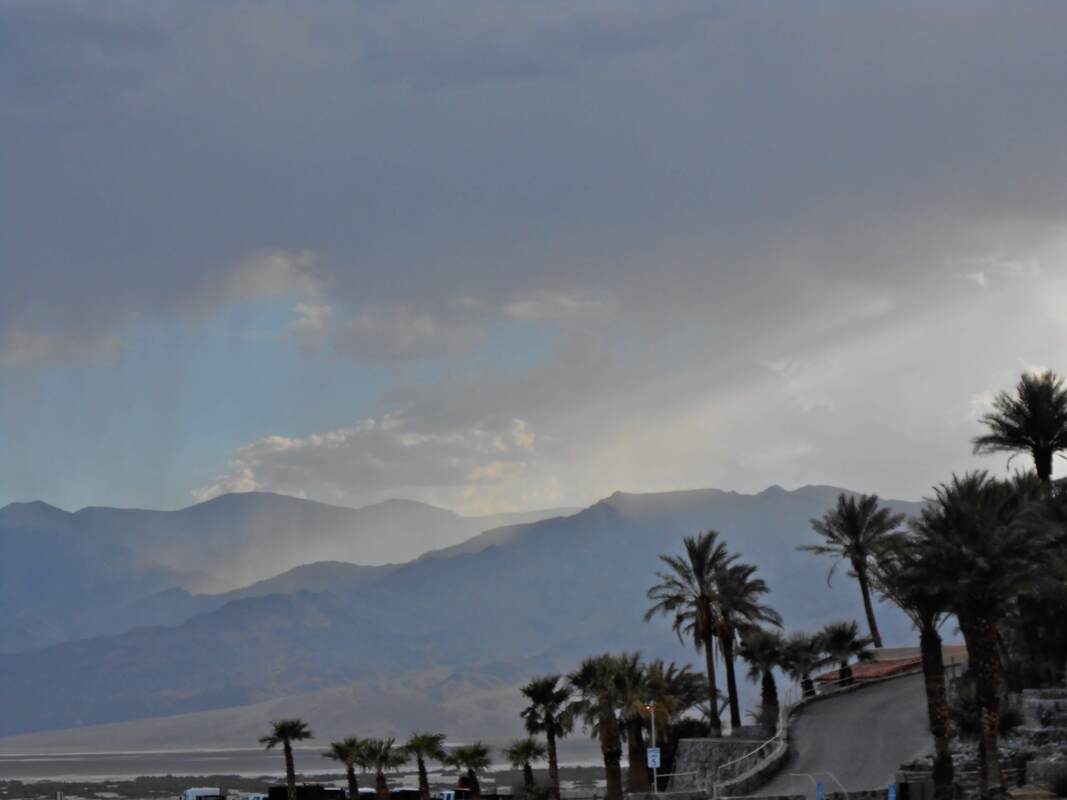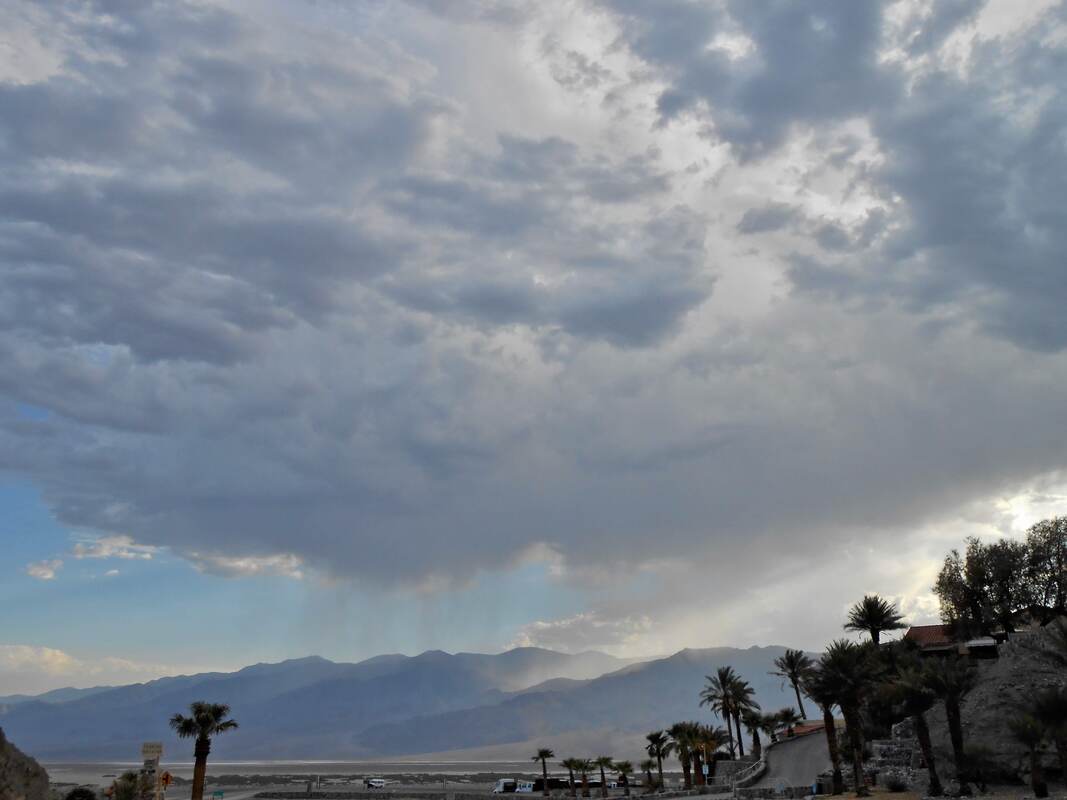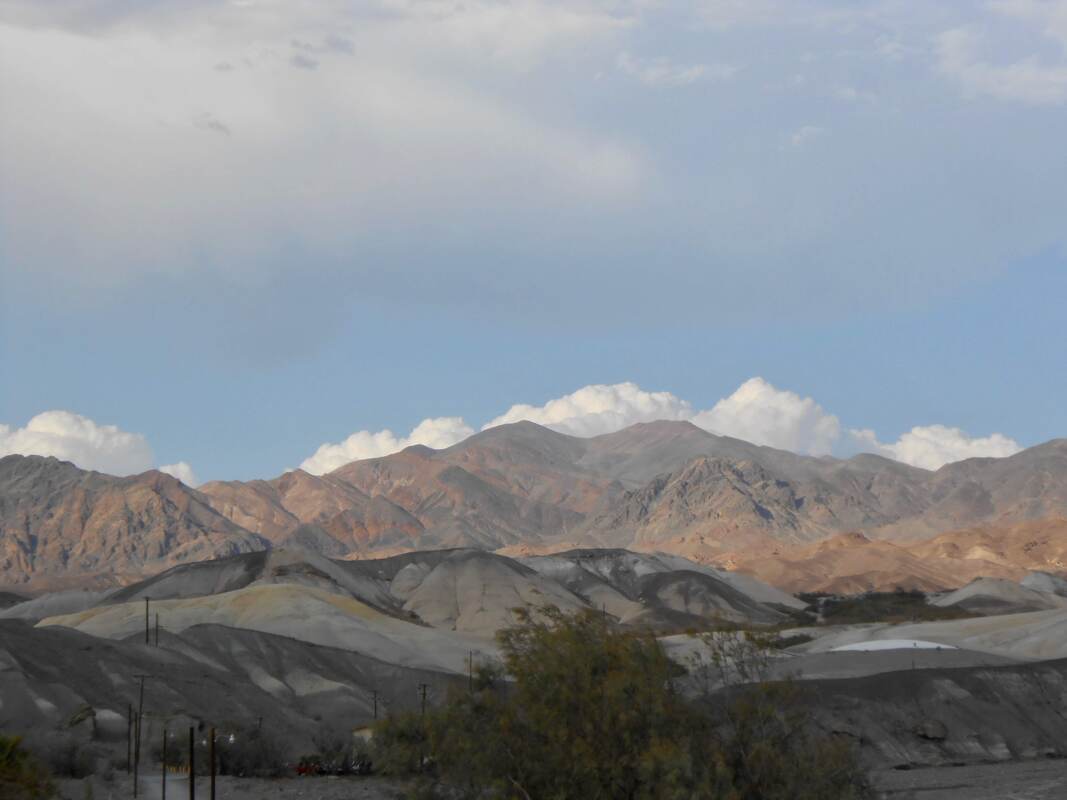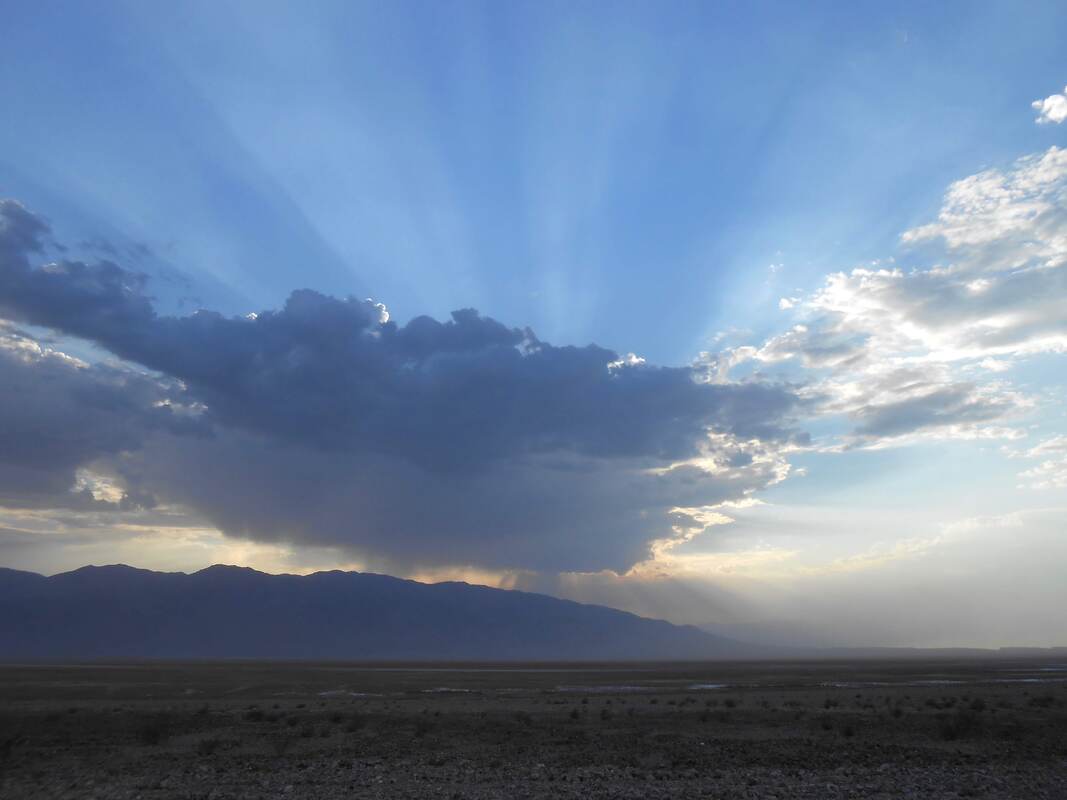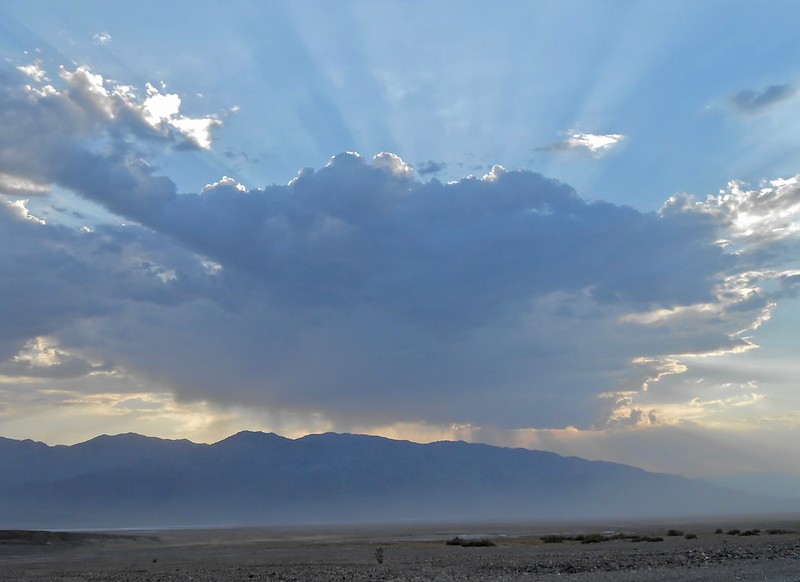|
A few years ago I worked in Death Valley for a summer season. During my tenure, there were 6 torrential thunderstorms and two big flash flood events. This was quite a rare occurrence, especially when considering that it usually only rains once or twice per year in this extremely arid place. Even worse, a lightning strike caused power outages in Death Valley and all communications were cut off for several weeks. With no way to communicate with the outside world, the reality of the remoteness of Death Valley sure did did set in quick. I was going to college at that time, so I actually had to drive 75 miles back to civilization every time a school project was due. Driving the roads out of Death Valley during the summer monsoon season was moteworthy as well, because it was never known if the road would still be there after a flash flood roared through. Because Death Valley is below sea level, monsoon season flash floods are a serious danger. Gulf Of Mexico storm clouds can roll in quickly during the summer season and the view of the skies can look just like being in Florida. When the heavy clouds meet the high mountains in the Death Valley region, the rain is guaranteed to come down in buckets all at one time and this creates the perfect conditions for powerful flash floods. The roads that go downhill into Death Valley are built in mountain dry wash ravines, so the roads can be subject to damage during the summer storm season. Such was the case when a flash flood destroyed part of Scotty’s Castle Road in Grapevine Canyon a few years ago. It has taken several years to repair both Scotty’s Castle and the access road and the project still has a way to go. This goes to show just how serious the Death Valley flash floods can be. While working in Death Valley I toured the local scenic sights on my days off. Shortly after touring Stovepipe Wells and Mosaic Canyon on a hot mid summer day, a big monsoon rain storm caused a flash flood that roared down the mountain that I had just been to. The water gained momentum coming down the mountain through Mosaic Canyon and the Stovepipe Wells Resort was right in the path of the flood water. The Stovepipe Wells resort was evacuated because of the dangerous conditions and their guests moved to shelter where I was working at the Furnace Creek Inn resort. Luckily, the damage to road was minimal, so those who were affected by the flash flood were able to get out of harms way. Some people think that rain is a blessing in the desert, but this is not always the case in Death Valley. The mountains that surround the valley reach up over a mile high. The Death Valley basin is way below sea level. With this combination of terrain extremes, when it rains it sure does pour! There is nothing to stop the water once it starts going downhill and the lowest elevations in Death Valley seem to catch the highest volume of flood water. This makes Death Valley a very dangerous place to be when the monsoon storm clouds arrive. On a positive note, there is no better place to observe strange weather anomalies than Death Valley during the summer monsoon rain season. The average daytime summer temperatures in Death Valley range between 118ºF and 130ºF, so the rain often evaporates before it hits the ground. It truly is a funny looking sight to see when the rain drops do a u-turn in midair! The rain that actually does hit the ground suffers a similar fate. Death Valley has average summer season ground temperatures that range between 165ºF and 185ºF, so the rain that hits the ground actually rises back up as a cloud of steam. These captivating weather anomalies truly are a strange thing to experience when touring Death Valley and they usually only occur during the blazing hot summer monsoon storm season. Today’s article was just meant to spread a little bit of flash flood safety awareness, but as can be seen in the photos, a monsoon rain storm in Death Valley can be a beautiful sight to see! As always, it is best to heed weather forecasts and stay out of mountain dry washes if rain clouds are in the area, so the trip will be a safe one. In Death Valley, an ounce of prevention is worth its weight in gold, because this is such an unforgiving place!
0 Comments
Your comment will be posted after it is approved.
Leave a Reply. |
Leave no trace!
New!
Destination West YouTube channel! https://www.youtube.com/@DestinationWestOrg *The Destination West website upgrading project is well underway. Unique YouTube slideshows are replacing the outdated Flickr photo galleries. The new videos feature modern graphics and alternative music instrumentals that enhance the viewing experience. Some articles are being condensed, while others are getting much needed edits. As everybody knows, the bulk of the original articles and photos were published on the fly during the Covid camping venture and there were limitations. Upgrading is the way to go and more articles will receive a makeover each week until this project is completed. After that, I will be able to gather new material. There is light at the end of the tunnel!
JD Lane Archives
July 2024
Donations help the Destinaton West project continue into the future!
Go Fund Me! This website uses marketing and tracking technologies. Opting out of this will opt you out of all cookies, except for those needed to run the website. Note that some products may not work as well without tracking cookies. Opt Out of Cookies |

